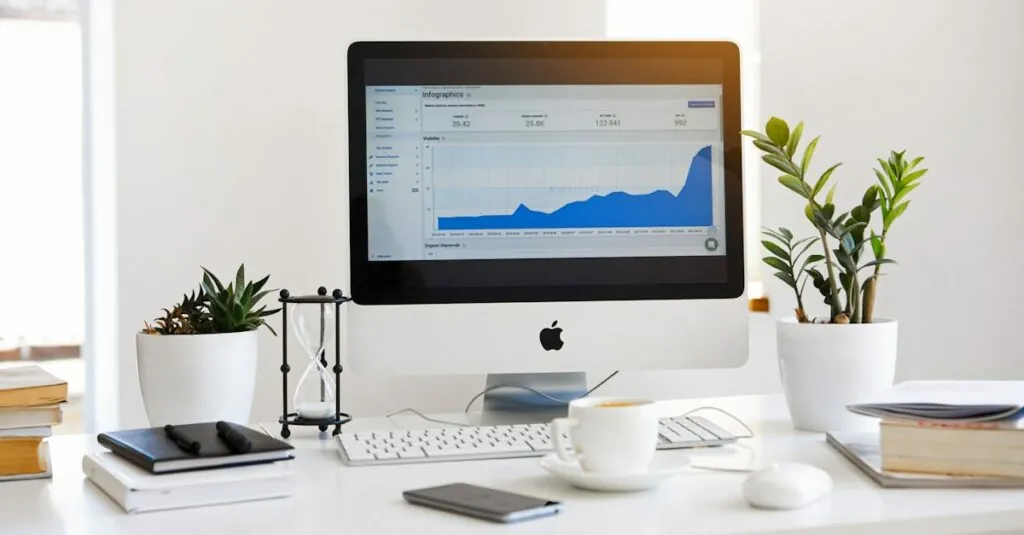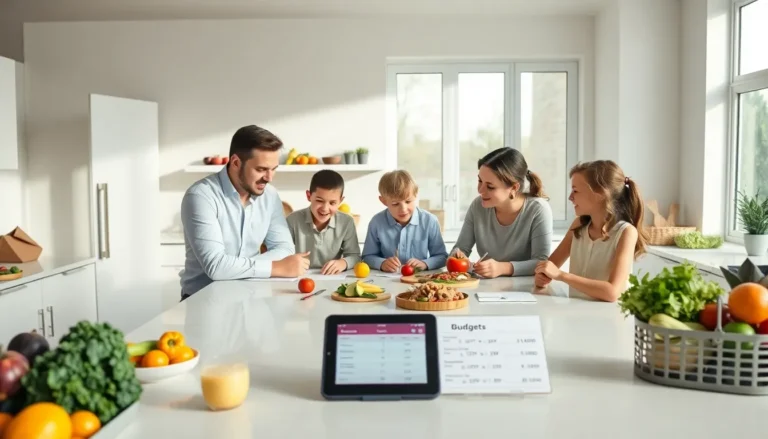Table of Contents
ToggleUpgrading to a new iPhone feels like unwrapping a shiny gift, but transferring all that precious data can feel like a chore. Fear not! It’s easier than finding a Wi-Fi signal in a coffee shop. Whether it’s photos of your cat’s latest antics or those 500 apps you swear you’ll use someday, moving everything over doesn’t have to be a headache.
Methods To Transfer Data To Another iPhone
Transferring data to another iPhone can be hassle-free. Various methods exist, each offering unique advantages.
Using iCloud
iCloud provides a smooth way to transfer data. Users first connect to Wi-Fi and then back up their old iPhone by going to Settings, tapping their name, selecting iCloud, and choosing Backup. After the backup completes, they switch the new iPhone on, select Restore from iCloud Backup during setup, and sign in to iCloud. Data like photos, files, and app configurations quickly sync to the new device. An advantage of this method is access to data anytime from any device connected to the same iCloud account.
Using iTunes
iTunes remains a reliable method for data transfer. Users first connect their old iPhone to a computer using a USB cable. They open iTunes and select their device, then choose Back Up Now to create a backup. After the backup, they connect the new iPhone, choose Restore Backup during setup, and select the recent backup. This process restores everything, including apps and settings. A major benefit of using iTunes is seamless transfer when Wi-Fi is unavailable.
Using Quick Start
Quick Start makes data transfer straightforward. When both iPhones are near each other, users power on the new device and bring it close to the old one. A prompt appears on the old iPhone, which users tap to initiate the process. After entering the Apple ID, a migration screen guides them to transfer data, such as apps, photos, and settings. This method offers real-time migration, ensuring that users can start using their new device almost immediately.
Preparing Your iPhones For Transfer
Preparing both iPhones simplifies the data transfer process. Various steps ensure a smooth transition.
Checking Compatibility
Check the iOS versions on both devices. Each iPhone requires iOS 12 or newer for certain methods like Quick Start. Apple specifies an iPhone 5s or newer for compatibility with the latest iOS features. Confirm that both devices are unlocked and signed into their respective Apple IDs. This verification allows seamless interaction during the transfer process. If users haven’t set up one of the devices yet, they can do so now before beginning.
Backing Up Your Data
Create a backup of the old iPhone for security. Users can choose iCloud or iTunes for this task. iCloud offers an easy, wireless option by navigating to Settings, tapping on the user’s name, selecting iCloud, and enabling iCloud Backup. Alternatively, connecting the iPhone to a computer using a USB cable provides the iTunes backup route. Users access the device summary in iTunes and select “Back Up Now.” Completing this step ensures that all data, from photos to app settings, is safeguarded during the transition.
Post-Transfer Tips
After completing the data transfer, users can take steps to ensure everything functions properly. Verifying content and addressing issues can enhance the overall experience.
Verifying Data Transfer
Confirming that data transferred correctly is essential. Check photos, messages, and apps to ensure they appear on the new device. Users should open each app, logging in where necessary, to check for saved preferences. Contacts can be verified through the Contacts app, ensuring all entries are intact. Additionally, reviewing settings for personalization helps verify that everything is as desired. If anything seems missing, a backup can be restored for correction.
Troubleshooting Common Issues
Common problems may arise after transferring data. Some users may find that certain apps don’t work as expected. In these cases, reinstalling the app from the App Store often resolves the issue. Users may also experience updates that are pending; downloading the latest version can fix bugs. If contacts or photos appear to be missing, checking iCloud settings ensures the sync is enabled. Connection issues may occur, which often resolves by rebooting the devices or toggling Wi-Fi settings.
Transferring data to a new iPhone doesn’t have to be a daunting task. With the right preparation and methods, users can enjoy a smooth transition to their new device. Whether opting for iCloud, iTunes, or Quick Start, each approach offers unique benefits that cater to different needs.
After the transfer, verifying that all data has been successfully moved ensures a hassle-free experience. Addressing any issues promptly will help users fully enjoy their new iPhone without missing a beat. Embracing these strategies not only simplifies the process but also enhances the excitement of unboxing a new device.





